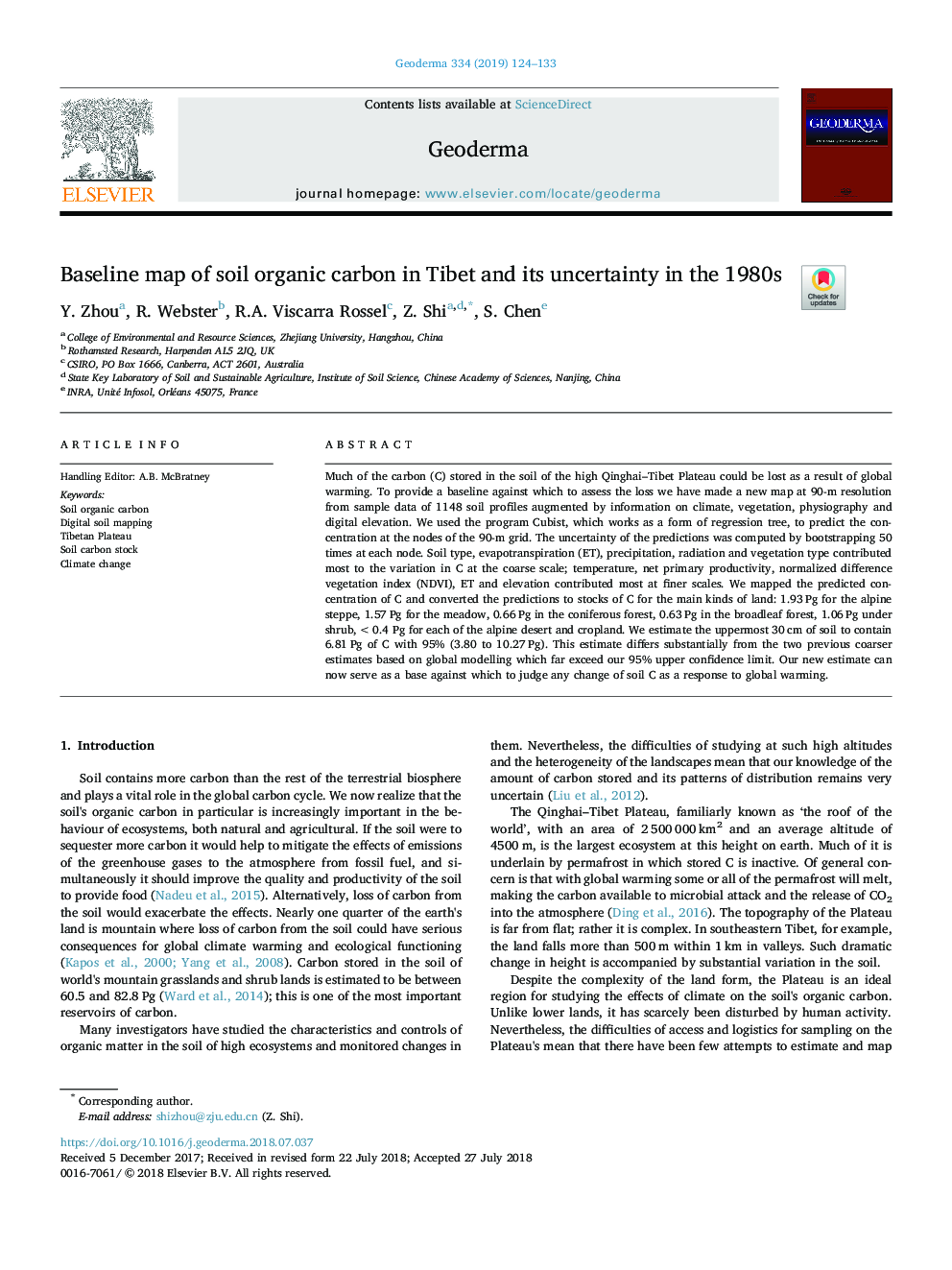| Article ID | Journal | Published Year | Pages | File Type |
|---|---|---|---|---|
| 8893825 | Geoderma | 2019 | 10 Pages |
Abstract
Much of the carbon (C) stored in the soil of the high Qinghai-Tibet Plateau could be lost as a result of global warming. To provide a baseline against which to assess the loss we have made a new map at 90-m resolution from sample data of 1148 soil profiles augmented by information on climate, vegetation, physiography and digital elevation. We used the program Cubist, which works as a form of regression tree, to predict the concentration at the nodes of the 90-m grid. The uncertainty of the predictions was computed by bootstrapping 50 times at each node. Soil type, evapotranspiration (ET), precipitation, radiation and vegetation type contributed most to the variation in C at the coarse scale; temperature, net primary productivity, normalized difference vegetation index (NDVI), ET and elevation contributed most at finer scales. We mapped the predicted concentration of C and converted the predictions to stocks of C for the main kinds of land: 1.93â¯Pg for the alpine steppe, 1.57â¯Pg for the meadow, 0.66â¯Pg in the coniferous forest, 0.63â¯Pg in the broadleaf forest, 1.06â¯Pg under shrub, < 0.4 Pg for each of the alpine desert and cropland. We estimate the uppermost 30â¯cm of soil to contain 6.81â¯Pg of C with 95% (3.80 to 10.27â¯Pg). This estimate differs substantially from the two previous coarser estimates based on global modelling which far exceed our 95% upper confidence limit. Our new estimate can now serve as a base against which to judge any change of soil C as a response to global warming.
Related Topics
Physical Sciences and Engineering
Earth and Planetary Sciences
Earth-Surface Processes
Authors
Y. Zhou, R. Webster, R.A. Viscarra Rossel, Z. Shi, S. Chen,
